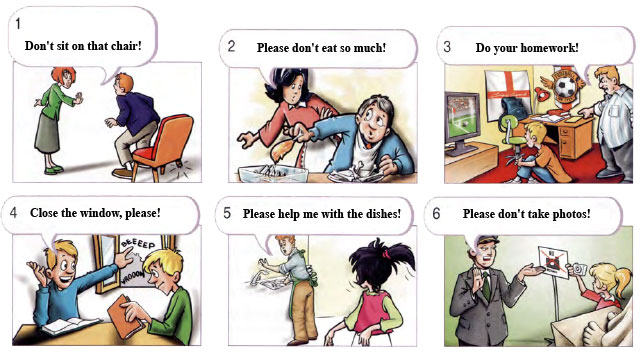Action verbs express something that you do — you start the action and then you stop the action.
Example:
He is writing a letter. He starts the action when he picks up the pen and starts to write. When he puts the pen down, he stops the action.
More action (dynamic) verbs:
read, come, go, work, get, make, take, put, study.
(Most verbs are actions.)
Stative verbs express situations. There is no need for action once the situation has started. You do not need to do anything. States are always true for as long as they continue.
Compare:
(1) He is a teacher.
This is a state — a situation. He is always a teacher. He is a teacher after the lesson. He is a teacher when he is in the pub or when he is asleep in bed. He is a teacher until he changes his job.
He is teaching English.
This is an action. It starts when the lesson starts and finishes when the lesson finishes.
(2) She has two children
This is a state. It started when the children were born. She does not have to do anything more. It is always true.
She is having a shower
This is an action. She has to do something. The action starts when she gets into the shower and turns on the water. When she turns off the water and gets out of the shower, the action is finished.
Common examples of stative verbs (or verbs with stative meanings)
Verbs expressing thoughts, feelings and senses:
like, love, hate, know, understand, feel, see, hear etc.
Verbs that are used to describe things or express possession:
be, have, own, need, seem, look, taste, smell, sound
Other common stative verbs (this is not a complete list)
believe, belong, contain, deserve, doubt, envy, exist, forget, imagine,
include, involve, possess, prefer, realize, recognize, suppose, suspect, want,wish
Confusing areas — verbs with both stative and dynamic meanings
As noted above with the example of ‘have’, some verbs have both dynamic and
stative meanings.
These include the following:
Verbs of the senses;
see (with your eyes)
see (visit)
taste (sense)
taste (try something to sample the taste)
smell (sense)
smell (put something next to your nose to sample the smell)
Verb to be
He is nice (permanent description)
He is being nice(temporary behaviour)
Love (general feeling)
She loves skiing
Love (enjoy)*
I’m loving it
*This meaning is not very common in British English and is included here simply
because students always ask about the use of this verb in the advertising slogan of a well-known fast food chain.
Stative (or State) Verb List
| like |
know |
belong |
| love |
realise |
fit |
| hate |
suppose |
contain |
| want |
mean |
consist |
| need |
understand |
seem |
| prefer |
believe |
depend |
| agree |
remember |
matter |
| mind |
recognise |
see |
| own |
appear |
look (=seem) |
| sound |
taste |
smell |
| hear |
astonish |
deny |
| disagree |
please |
impress |
| satisfy |
promise |
surprise |
| doubt |
think (=have an opinion) |
feel (=have an opinion) |
| wish |
imagine |
concern |
| dislike |
be |
have |
| deserve |
involve |
include |
| lack |
measure (=have length etc) |
possess |
| owe |
weigh (=have weight) |
|
A verb which isn’t stative is called a dynamic verb, and is usually an action.
Some verbs can be both stative and dynamic:
| Be |
be is usually a stative verb, but when it is used in the continuous it means ‘behaving’ or ‘acting’
- you are stupid = it’s part of your personality
- you are being stupid = only now, not usually
|
| Think |
- think (stative) = have an opinion
I think that coffee is great
- think (dynamic) = consider, have in my head
what are you thinking about? I’m thinking about my next holiday
|
| Have |
- have (stative) = own
I have a car
- have (dynamic) = part of an expression
I’m having a party / a picnic / a bath / a good time / a break
|
| See |
- see (stative) = see with your eyes / understand
I see what you mean
I see her now, she’s just coming along the road
- see (dynamic) = meet / have a relationship with
I’ve been seeing my boyfriend for three years
I’m seeing Robert tomorrow
|
| Taste |
|
|



























